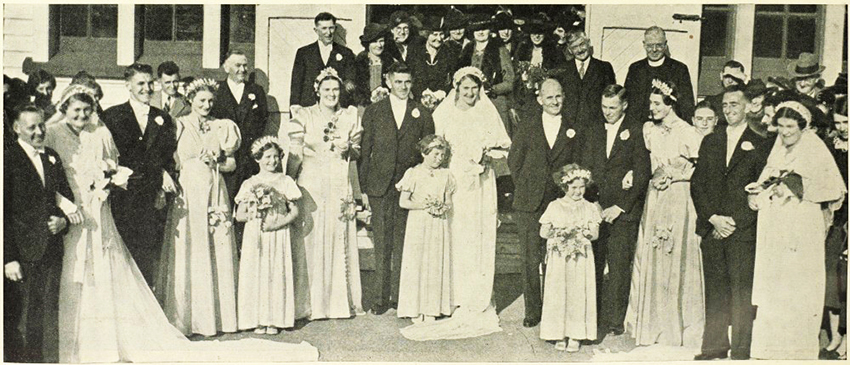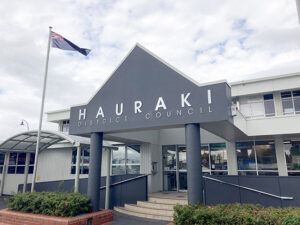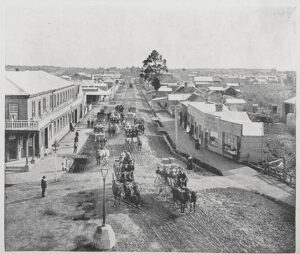As part of a Valley Profile series, MEGHAN HAWKES searches through old newspapers to bring you the stories Thames Valley locals once read about themselves.
1938
A triple wedding at Paeroa saw three sisters married in one ceremony.
They were Miss Eileen McCracken, twin daughter of Mr and Mrs McCracken, of Tirohia, who was married to Thomas Campbell, of Paeroa; Isabelle McCracken, twin daughter, who was married to Arthur Simmons, of Paeroa; and Eva McCracken, fourth daughter, who was married to Albert Saunders, also of Paeroa. The ceremony was performed at the Presbyterian Church and the three brides were given away by their father.
The church was beautifully decorated with white camellias and asparagus fern. The brides all wore white silk velvet gowns of individual design, their trains topped with halos of orange blossom and they carried bouquets of arum lilies. Their mother wore blue suede crepe, with hat to tone and a fur stole. She carried a posy of violets and maidenhair fern. The reception was attended by 170 guests. The suggestion of a museum for Thames outraged one reader of the Thames Star who couldn’t “see why people of this day had a desire to gather together a musty old collection of relics of the past, when they could with much benefit put their time and energies into livening up the present appearance of the town”.
“There are many things more urgently required in Thames than a museum for antiques… how many people, I ask, would visit it or benefit by it? I venture to say that after the novelty had worn off, the collection would prove nothing more than a ‘white elephant,’ of which Thames has had plenty of experience in the past.”
For several months, the Thames Star had sponsored a collection of photographs and objects of interest to form the nucleus of an Old Pioneers’ Museum. The area was rich in early history, and the present generation of residents, particularly those who had descended from the pioneers, were encouraged to seriously set about gathering and preserving artefacts of the early days, before it was too late. A large room at the Carnegie Library had been put at the disposal of a committee for housing the collection. What was wanted now was the formation of a Thames Historical Society to annotate and tabulate every item, verify dates, and organise displays. An honorary curator would be appointed to take charge, and the Museum put on a business-like basis.
A Queen Carnival was held to raise funds for a library and wireless set for Waitakaruru School.
The Carnival included a clay bird shoot, two garden parties and several social and card evenings, with a focus on electing a queen of the carnival. The contestants included a Township Queen, a Canal Queen and a Factory Road Queen.
“Clouds of dust and crowds of bumps” summed up the condition of the Thames Coast Rd, which was falling into a terribly dilapidated state. The dust nuisance combined with a pot-holed and corrugated surface gave motorists good grounds for complaint which fell on deaf ears. But it was the stretch of road from Kōpū to the Kauaeranga Bridge that was absolutely the worst part of the 80-odd miles between Thames and Hamilton, or between Thames and Rotorua. The surface was more like that of a washing board.



